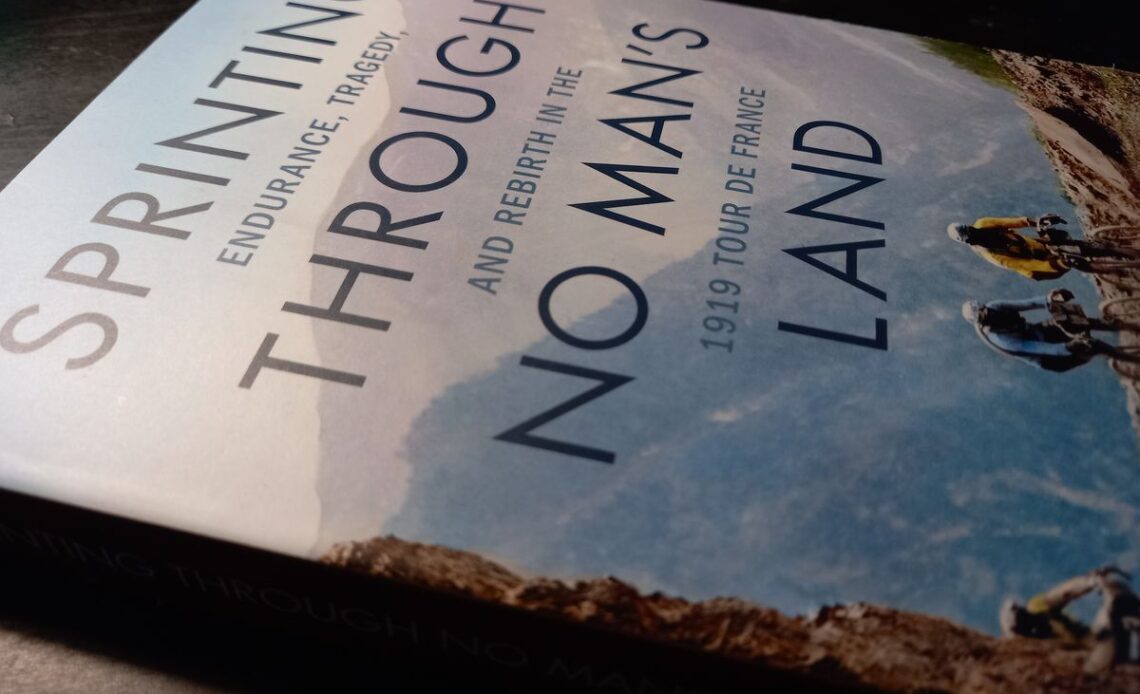Title: Sprinting Through No Man’s Land – Endurance, Tragedy, And Rebirth in the 1919 Tour de France
Author: Adin Dobkin
Publisher: Little A
Year: 2021
Pages: 295
Order: Amazon Publishing
What it is: A story of the 1919 Tour de France
Strengths: It’s a story from cycling’s Heroic Age
Weaknesses: It wears its research heavily
Much of writing, of course, is avoiding the page, and research can become the surest form of pencil-sharpening. But it’s odd: it’s not the reader you need to convince, but yourself. When I was sure I was comfortable with some aspect – street furniture for instance – I was happy to write nothing about it. The danger of too much period detail is that your characters drown in it. But I needed to be sure I knew enough, in order to leave most of it out.
~ Jamie O’Neill
In the early hours of the last Sunday of June, 1919 – so early it was still the night before, three o’clock – 67 riders rode out from the Parc des Princes in Paris bound for Le Havre. It was the first stage of the thirteenth Tour de France, the first Tour in five years. The last one, in 1914, had taken place on the eve of war. Far to the east, in Sarajevo, Franz Ferdinand was assassinated as the riders in that race were also riding toward Le Havre. By the time that Tour ended war was imminent and within days of returning to Paris many of the géants de la route swapped their cycling jerseys for military uniforms. By the time the Treaty of Versailles was signed on the eve of the 1919 Tour many of those riders who had survived the war were still in uniform.
Of the 67 riders who set out from the Parc des Princes only 41 were still in the race 388 kilometres later in Le Havre. After a day’s rest the riders moved on, again starting in the late hours of the previous night, this time bound for Cherbourg. By the time they had covered the 364 kms separating the two towns just 27 riders remained in the race. Stage by stage that number fell: 25 riders were left in the race by the time it reached Brest; 20 in Les Sables d’Olonne; 17 in Bayonne, the gateway to the Pyrénées.
The wheat had been winnowed from the chaff, those riders least prepared for the resumption of the Tour falling aside early. Only two riders fell away during the Tour’s crossing of the Pyrénées, 15 left in the…
Click Here to Read the Full Original Article at Podium Cafe – All Posts…

